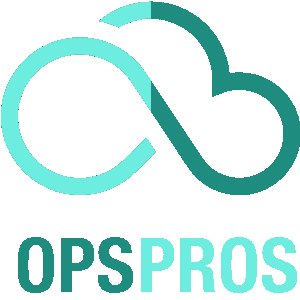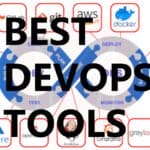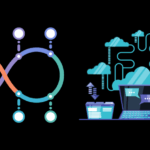As organizations strive to streamline their operations and enhance collaboration in the software lifecycle, more and more are turning to a DevOps approach with Guidewire. This approach involves integrating Guidewire into DevOps practices, which emphasizes automation, continuous integration, and continuous delivery for faster and more efficient software development.
Guidewire and DevOps
When it comes to streamlining operations and collaboration in the software development lifecycle, Guidewire DevOps integration is becoming increasingly popular. As more organizations adopt DevOps practices for Guidewire, automation, continuous integration, and continuous delivery have become crucial for efficient operations.
Guidewire is a suite of software solutions that provides systems for handling claims, policy administration, and billing. Applying DevOps practices to Guidewire can streamline software development, helping teams to deliver high-quality releases faster.
Streamlining Operations with Guidewire DevOps

The efficient integration of Guidewire and DevOps can streamline operations and improve the entire software development lifecycle. Automation plays a crucial role in achieving these goals by enabling rapid testing, deployment, and release management. Utilizing Guidewire DevOps practices can mean faster delivery and more efficient use of resources.
| Stage of Software Development Lifecycle | Area for Automation |
|---|---|
| Testing | Automated testing tools for regression and functional testing |
| Deployment | Automated environment setup, configuration, and deployment |
| Release Management | Automated release management processes and version control |
Integrating Guidewire DevOps and automation can provide additional benefits beyond speed and efficiency. It can also increase accuracy by eliminating human error and provide consistent results in every stage of development. With the right tools and processes in place, sprint cycles can be shortened and releases can be made more predictable.
Collaboration with Guidewire DevOps
In a Guidewire DevOps environment, collaboration is key to achieving successful outcomes. Cross-functional teams must work together with effective communication to streamline operations and enhance efficiency. By following these key principles, organizations can achieve true collaboration in a DevOps context:
Cross-Functional Teams
One of the most important aspects of achieving collaboration in Guidewire DevOps is the use of cross-functional teams. This means that individuals from different departments or areas of expertise work together towards a common goal. In a Guidewire DevOps context, this approach can help ensure that everyone involved in the software development lifecycle is working towards the same outcome, resulting in smoother operations and fewer errors.
Effective Communication
Alongside cross-functional teams, effective communication is critical to successful collaboration. Guidewire DevOps involves multiple stages of the software development lifecycle, and stakeholders need to be kept informed at every step to ensure smooth operations. Communication channels must be established, and regular check-ins should be scheduled to keep everyone on the same page.
Implementing Guidewire DevOps Frameworks
Guidewire DevOps frameworks provide a structured approach to implementing DevOps practices in a Guidewire environment. Using frameworks can help organizations streamline the software development lifecycle, improve collaboration among teams, and promote a culture of continuous improvement. Below are some popular Guidewire DevOps frameworks:
1. Agile

The Agile framework is based on iterative and incremental development, emphasizing flexibility and customer satisfaction. Agile uses short development cycles or sprints, where teams work on small, manageable pieces of functionality. The framework promotes collaboration, feedback, and continuous improvement throughout the software development lifecycle.
2. Scrum
Scrum is a subset of Agile that focuses on cross-functional teams and involves daily stand-up meetings, sprint planning, and sprint review and retrospectives. Scrum emphasizes prioritization, communication, and transparency, enabling teams to deliver high-quality software at a faster pace.
3. Kanban
Kanban is a visual framework that uses cards or boards to track the progress of work. It emphasizes workflow visualization, limiting work in progress, and continuous delivery. Kanban enables teams to monitor and optimize the flow of work, reducing bottlenecks and improving efficiency.
4. ITIL
The Information Technology Infrastructure Library (ITIL) framework provides guidelines for IT service management, including software development. ITIL emphasizes service design, service transition, and service operation, promoting a customer-focused and efficient approach to software development. ITIL enables organizations to align their DevOps practices with business objectives and improve service quality.
Examples of Guidewire DevOps frameworks include Agile with Guidewire, Scrum with Guidewire, and Kanban with Guidewire. Organizations can choose the framework that best suits their needs and adapt it to their unique requirements.
Solving Common Problems in Guidewire DevOps
Implementing Guidewire DevOps practices can improve the software development lifecycle by streamlining operations and enhancing collaboration between teams. However, like any process, there are potential challenges that may need to be addressed. Here are some common problems in Guidewire DevOps and how to solve them:
Troubleshooting Issues
One of the main challenges in Guidewire DevOps is troubleshooting issues that arise during the development process. This may include debugging code, identifying configuration errors, or resolving conflicts between different versions of software components.
To address this challenge, it’s important to have a clear understanding of the underlying architecture and dependencies of the application. Tools such as log analyzers and exception trackers can help pinpoint errors and resolve them quickly. It’s also helpful to have a defined process for identifying, diagnosing, and resolving issues, and to establish protocols for communication and collaboration among team members.
Implementing Best Practices
Another challenge in Guidewire DevOps is implementing best practices for software development. This may include practices such as automated testing, continuous integration, and version control.
To address this challenge, it’s important to establish clear guidelines and standards for development that are consistently applied across all teams. This can include creating a development playbook that outlines coding standards, deployment procedures, and other best practices. Collaboration between cross-functional teams can also help ensure that best practices are implemented consistently and effectively.
Avoiding Common Pitfalls
It’s important to avoid common pitfalls in Guidewire DevOps to ensure a successful implementation. This may include issues such as resistance to change, lack of buy-in from stakeholders, or poor communication between teams. To address these challenges, it’s important to establish clear goals and metrics for success that are aligned with business objectives.
It’s also helpful to create a culture of continuous improvement and learning, where teams are encouraged to experiment, learn from failures, and iterate on their processes. Finally, it’s important to have strong leadership and stakeholder support to ensure that the implementation of Guidewire DevOps is prioritized and supported throughout the organization.
Overcoming Challenges in Guidewire DevOps Adoption

While implementing a Guidewire DevOps approach can bring significant benefits, it can also come with its share of challenges. These challenges must be addressed to ensure a smooth and successful adoption. Two major challenges organizations face when implementing Guidewire DevOps are change management and resistance to change.
Change Management
The adoption of Guidewire DevOps requires significant changes to the organization’s existing software development processes. This change can be difficult and requires careful planning, communication, and collaboration. The following are some best practices that organizations can implement to manage change when adopting a Guidewire DevOps approach:
- Identify key stakeholders and involve them in the planning and implementation process.
- Create a clear communication plan and ensure that team members are adequately trained in the new processes.
- Start small and focus on incremental changes to build momentum and demonstrate success.
- Measure progress and adjust the plan as necessary to ensure success.
Resistance to Change
Resistance to change is another significant challenge that organizations may face when implementing Guidewire DevOps. Common sources of resistance include fear of the unknown, lack of understanding, and concerns about changes to roles and responsibilities.
It is essential to address these concerns to mitigate resistance to change. The following strategies can help overcome resistance and facilitate a successful Guidewire DevOps adoption:
- Communicate the benefits of the new approach clearly and frequently. Highlight how the Guidewire DevOps approach will improve efficiency, reduce errors, and enhance collaboration.
- Involve staff in the design and implementation process to increase their engagement and buy-in.
- Provide support and training to staff to ensure they understand the new processes and are confident in their roles.
- Set clear goals and metrics to measure progress and success.
Measuring Success in Guidewire DevOps

Measuring success is a crucial element to ensure the success of a Guidewire DevOps implementation. In today’s software development world, it’s imperative to have an effective strategy in place for measuring the progress and outcomes of an initiative.
The use of key performance indicators (KPIs) is an excellent way to measure success in a Guidewire DevOps environment. KPIs can provide valuable insights into the effectiveness and efficiency of the process, allowing teams to identify areas for improvement and make data-driven decisions.
Some examples of KPIs that can be used in Guidewire DevOps include:
| KPI | Description |
|---|---|
| Lead Time | The amount of time it takes to move code changes from development to production |
| Deployment Frequency | The number of deployments made per unit of time, such as per day or per week |
| Time to Recover | The time it takes to detect and recover from a production issue or failure |
| Change Failure Rate | The percentage of changes that result in a failure in production |
Continuous improvement is another critical aspect of measuring success in Guidewire DevOps. By continually assessing and improving the process, teams can optimize their workflow and achieve better results. Teams can use retrospective meetings to evaluate past performance, identify areas of improvement, and implement changes to iterate and speed up the process.
Wrapping up
Organizations can leverage the benefits of Guidewire DevOps to streamline operations, enhance collaboration, and deliver high-quality software solutions to their customers.
Sources
The Official Guidewire website: https://www.guidewire.com/
DevOps.com’s article on Guidewire DevOps: https://devops.com/guidewire-devops/
The DevOps Handbook: How to Create World-Class Agility, Reliability, and Security in Technology Organizations by Gene Kim, Jez Humble, Patrick Debois, and John Willis
Guidewire’s DevOps resource page: https://resources.guidewire.com/devops
James is an esteemed technical author specializing in Operations, DevOps, and computer security. With a master’s degree in Computer Science from CalTech, he possesses a solid educational foundation that fuels his extensive knowledge and expertise. Residing in Austin, Texas, James thrives in the vibrant tech community, utilizing his cozy home office to craft informative and insightful content. His passion for travel takes him to Mexico, a favorite destination where he finds inspiration amidst captivating beauty and rich culture. Accompanying James on his adventures is his faithful companion, Guber, who brings joy and a welcome break from the writing process on long walks.
With a keen eye for detail and a commitment to staying at the forefront of industry trends, James continually expands his knowledge in Operations, DevOps, and security. Through his comprehensive technical publications, he empowers professionals with practical guidance and strategies, equipping them to navigate the complex world of software development and security. James’s academic background, passion for travel, and loyal companionship make him a trusted authority, inspiring confidence in the ever-evolving realm of technology.








